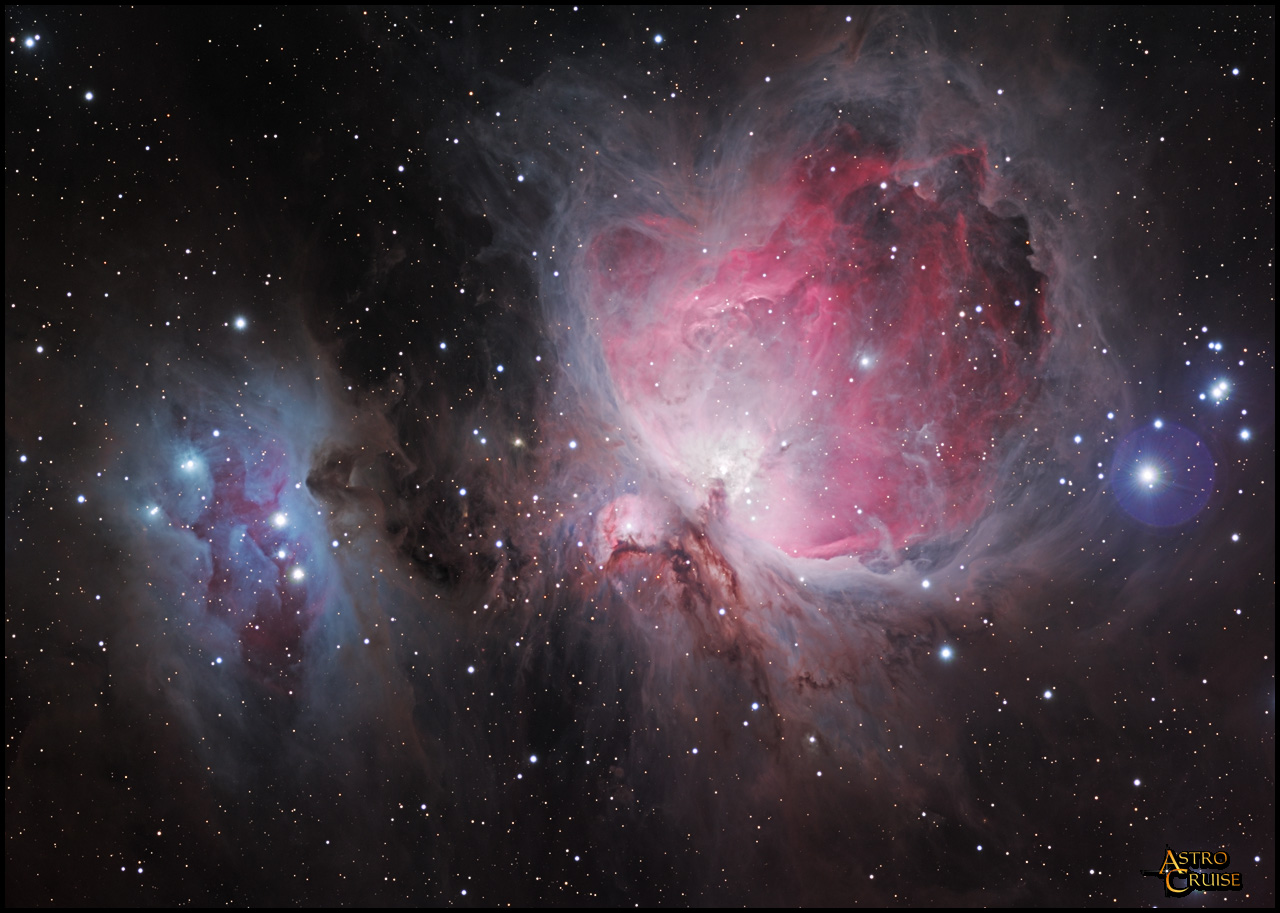 |
| This just goes to show that you can be an excellent warrior without really having a head. |
The seven most distinct stars that make up the constellation form the body and belt of Orion, who is a hunter. Something that I didn't know about Orion is that his shoulders are formed by the stars Betelgeuse (which immediately reminds me of Hitchhiker's Guide to the Galaxy) and Bellatrix (which immediately reminds me of Harry Potter). Less prominent stars form his arms and his shield (plot twist--it's not a bow like I always thought, even though I feel like a bow would make more sense for a hunter to have than a shield). Finally, two stars and the Orion Nebula form the sword that hangs down from his belt.
The Orion Nebula, which is about 1,300 lightyears away, is one of a few nebulae that are visible to the naked eye. This formation has been greatly studied and has helped astronomers understand star formation and evolution of molecular clouds. Its core is formed by large O-class stars, which contribute a blue color to the nebula. Interestingly, a green color emitted by the nebula is caused by an electron transition in oxygen ions believed impossible for a long time.
 |
| The Orion Nebula |
Sources
http://pages.cs.wisc.edu/~arun/orion/OrionPic.jpg
https://en.wikipedia.org/wiki/Orion_(constellation)https://en.wikipedia.org/wiki/Orion_Nebula
http://www.astrocruise.com/milky_way/M42_0712.jpg
No comments:
Post a Comment